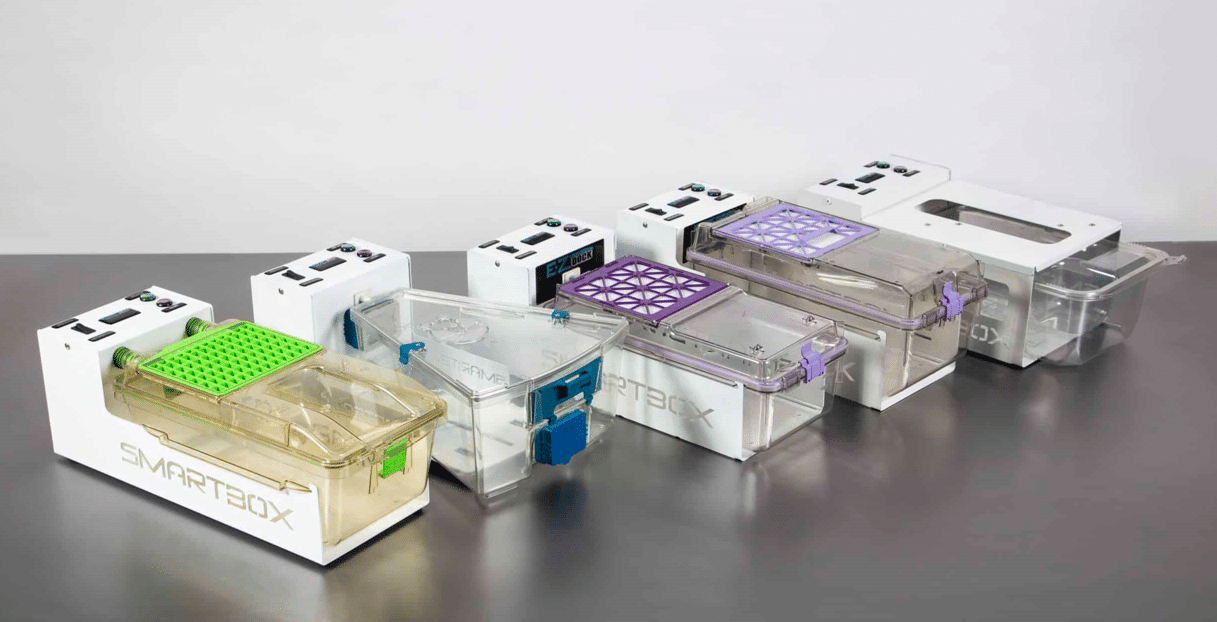
Understanding the complexities and responsibilities of rodent euthanasia in laboratory research is crucial for veterinarians, researchers, and animal care professionals. This comprehensive guide delves into the ethical, legal, and practical aspects of rodent euthanasia, ensuring adherence to the American Veterinary Medical Association (AVMA) guidelines. We explore the historical evolution of euthanasia practices, the development of humane methods, and the critical role of Institutional Animal Care and Use Committees (IACUCs) in overseeing these processes. Our guide aims to provide a well-rounded perspective on the challenges and responsibilities involved in making informed, compassionate decisions about ending the life of a research animal. It emphasizes the importance of balancing scientific objectives with ethical and legal considerations, offering detailed insights into evaluating euthanasia methods, understanding the emotional impact on personnel, and ensuring compliance with regulatory standards.
Historical Context and Evolution of Euthanasia
The practice of animal euthanasia has evolved significantly over the years, reflecting a growing understanding of animal welfare, ethical considerations, and advancements in veterinary medicine. Historically, euthanasia methods were primarily focused on the practical aspect of ending an animal’s life, often with limited consideration for the animal’s experience or welfare. This perspective has shifted dramatically, leading to the development of more humane and scientifically informed approaches.
Early Practices
Initially, euthanasia methods were rudimentary and often not specifically designed with animal welfare in mind. The primary goal was to achieve the end result — death — with little consideration for the process or the potential suffering of the animal. This approach was largely driven by the prevailing attitudes toward animals, which viewed them more as property or resources rather than sentient beings with the capacity for suffering.
Shift in Perspective
There has been a significant shift in the perception of animals and their welfare. This change has been influenced by a growing body of scientific evidence demonstrating the capacity of animals to experience pain and distress. Societal attitudes toward animals have also evolved, with increased recognition of their rights and the ethical implications of how they are treated, particularly in their end-of-life care.
Development of Guidelines
In response to these changing attitudes and increased knowledge, professional organizations like the American Veterinary Medical Association (AVMA) began to develop guidelines for animal euthanasia. These guidelines are aimed at ensuring that euthanasia is carried out in a humane manner, minimizing pain and distress for the animal. The AVMA guidelines, for example, not only specify appropriate euthanasia methods and agents, but also acknowledge the importance of considering and applying appropriate pre-euthanasia practices (e.g., sedation), animal handling, and the disposal of animal remains.
Modern Euthanasia Practices
Euthanasia methods today are evaluated based on their ability to induce death with minimal pain and distress, speed, reliability, safety for personnel, and irreversibility. There is also an emphasis on the compatibility of these methods with the intended use of the animal and the potential emotional impact on those involved in the process. These criteria reflect a comprehensive approach that balances practicality with ethical and welfare considerations.

Evaluating Euthanasia Methods
Euthanasia in veterinary practice is a critical procedure that requires careful consideration and evaluation. The “AVMA Guidelines for the Euthanasia of Animals: 2020 Edition” outlines a comprehensive framework for evaluating euthanasia methods. This framework ensures that the chosen method meets the highest standards of animal welfare and ethical practice. The evaluation process includes several key criteria:
- Ability to Induce Loss of Consciousness and Death with Minimal Pain and Distress: The primary goal of any euthanasia method is to ensure a peaceful and painless death for the animal. Methods that quickly induce unconsciousness followed by death, while minimizing pain and distress, are preferred.
- Time Required to Induce Loss of Consciousness: The speed at which a method induces unconsciousness is crucial. Faster methods reduce the duration of potential distress or discomfort for the animal.
- Reliability: A reliable euthanasia method consistently produces the desired outcome without fail. This reliability is vital for both the welfare of the animal and the peace of mind of the personnel involved.
- Safety of Personnel: The safety of those administering euthanasia is also a key consideration. Methods should not pose significant risks to humans.
- Irreversibility: Once administered, the method should guarantee death, preventing any chance of recovery or revival.
- Compatibility with Intended Animal Use and Purpose: The method chosen should be appropriate for the specific type and purpose of the animal, whether it is a companion animal, a research subject, or wildlife.
- Emotional Effect on Observers or Operators: The psychological impact on those performing or witnessing the procedure is an important factor. Methods that are less traumatic for observers are often preferred.
- Compatibility with Subsequent Evaluation, Examination, or Use of Tissue: In research settings, the method should not compromise the integrity of the animal’s tissues if they are to be used for further study.
- Drug Availability and Human Abuse Potential: Accessibility of the drugs used and their potential for misuse by humans is a consideration, especially with controlled substances.
- Compatibility with Species, Age, and Health Status: Different species, ages, and health conditions may require different methods. A method suitable for one species may not be appropriate for another.
- Ability to Maintain Equipment in Proper Working Order: The maintenance and operational reliability of the equipment used in euthanasia is essential.
- Safety for Predators or Scavengers: In cases where animal remains might be consumed by other animals, the method should not pose a risk to these secondary consumers.
- Legal Requirements: Compliance with legal and regulatory guidelines is mandatory.
- Environmental Impacts: The environmental footprint of the euthanasia method, including the disposal of the animal’s remains, should be considered.
Methods of Euthanasia by Species and Environment
In the realm of laboratory research, the humane and ethical euthanasia of animals, particularly rodents, is of paramount importance. Rodents, such as mice, rats, hamsters, guinea pigs, and other similar species, are widely used in scientific research due to their biological and genetic similarities to humans. Ensuring their welfare at the end of their life is not only a legal requirement, but also a moral obligation of the scientific community.
Considerations Before Euthanasia
Before proceeding with euthanasia, it’s crucial to minimize potential distress for rodents. Factors contributing to distress include transport, handling (especially for animals not accustomed to it), disruption of compatible groups, and elimination of established scent marks. Selecting a method that minimizes these distress sources is essential, as is ensuring that the method is as least stressful as possible to the animals.
Acceptable Methods for Rodent Euthanasia
- Barbiturates and Barbituric Acid Derivatives: Injectable barbiturates and their combinations are commonly used due to their quick and smooth action in rendering rodents unconscious. Pentobarbital is a frequently used barbiturate, typically administered at a dose three times the anesthetic dose. However, it’s important to be aware of the potential for pain, especially with intraperitoneal (IP) route injections.
- Focused Beam Microwave Irradiation: This method is acceptable with conditions, particularly for mice and rats, and is preferred when immediate fixation of brain metabolites is required for research purposes. It’s critical that personnel are well-trained and use machines specifically designed for this purpose.
- Carbon Dioxide: The use of carbon dioxide, with or without premedication with halogenated anesthetics, is an acceptable method for small rodents. Compressed carbon dioxide in cylinders is recommended for precise regulation of gas inflow. The optimal flow rate should displace 30 to 70 percent of the chamber volume per minute.
- Halogenated Anesthetics: Halothane, isoflurane, sevoflurane, or desflurane, with or without nitrous oxide, can be used under certain conditions for euthanizing laboratory rodents. In cases where physical restraint is challenging, these agents, delivered via vaporizer or the open-drop technique, can be effective. However, ensuring that the rodent does not come into direct contact with the anesthetic liquid is crucial.
- Dissociative Agent Combinations: For conscious rodents, combinations of ketamine and similar dissociative agents with an α2-adrenergic receptor agonist (like xylazine) or benzodiazepines (such as diazepam) are acceptable. The use of local anesthetics and anticonvulsants may help prevent pain but also could cause pain with IP injections.
Legal and Ethical Considerations in Animal Euthanasia: A Focus on Research Settings and IACUC Involvement
Animal euthanasia in research settings extends beyond a medical procedure; it encompasses a myriad of ethical and legal challenges. The American Veterinary Medical Association (AVMA) offers guidelines to help navigate these complexities, emphasizing the need for adherence to ethical principles and legal mandates, especially in the context of biomedical research and the crucial role of Institutional Animal Care and Use Committees (IACUCs).
Ethics Versus Practical Necessity in Biomedical Research: In biomedical research, the euthanasia of animals, particularly when dealing with healthy subjects, poses significant ethical dilemmas. The AVMA acknowledges these moral challenges but also recognizes the practical necessity in certain research contexts. Here, strict adherence to established policies, guidelines, and regulations becomes paramount. The role of IACUCs is vital in ensuring these standards are met, as they oversee the humane treatment of animals in research environments.
Veterinary Medical Ethics and Research: Veterinarians involved in research are encouraged to stay informed about public moral views on animal euthanasia and to understand how their personal beliefs may influence their professional decisions. The AVMA emphasizes the importance of education regarding public discourse on animal ethics and welfare, especially concerning end-of-life care. This knowledge is crucial for veterinarians to engage in meaningful discussions about ethical animal treatment and to responsibly use euthanasia methods and agents in a research setting.
IACUC and Balancing Multiple Factors in Euthanasia Decisions: In research environments, the decision to euthanize animals is influenced by various factors, including the objectives and design of the research, as well as the welfare of the animals and potentially broader public health considerations. IACUCs play an indispensable role in this decision-making process. These committees are responsible for applying the principles of refinement, replacement, and reduction — the Three Rs — to ensure the respectful and humane treatment of animals used in research. They balance animal welfare with research goals, ensuring that euthanasia decisions are made with consideration for both ethical implications and scientific necessities.
Legal Obligations and IACUC Oversight: Legal compliance in animal research, particularly concerning euthanasia, is a critical aspect that IACUCs oversee. They ensure that all practices adhere to national and institutional guidelines, including the AVMA’s recommendations. The IACUCs’ involvement is crucial in upholding legal standards, providing a framework within which researchers must operate, thereby safeguarding the ethical treatment of animals in research settings.
Further Resources
For veterinarians, researchers, and animal care professionals seeking more information, the following resources are recommended:
- AVMA Website: Contains detailed guidelines, position statements, and resources on animal welfare and ethics.
- Continuing Education: Various veterinary associations offer courses and seminars on animal welfare and euthanasia practices.
- Scientific Publications: Journals and books on veterinary medicine and animal ethics provide in-depth insights and research findings.
- Professional Conferences: Veterinary and animal welfare conferences are platforms for learning about the latest research and networking with experts.
- Ethical Committees: IACUCs and similar bodies provide guidance and oversight in research settings.
ARES: The Go-To Experts for Vivarium Equipment Featuring Euthanex Products
When it comes to state-of-the-art vivarium equipment, ARES stands out as the industry leader, especially renowned for its comprehensive range of Euthanex products. ARES’s expertise in the field of animal research equipment solutions makes it an indispensable resource for any laboratory setting.
Unmatched Expertise in Vivarium Solutions: ARES’s deep knowledge and understanding of vivarium environments position it as the ultimate expert in the field. Its team of seasoned professionals is not only well-versed in the technical aspects of vivarium equipment, but also understands the ethical and scientific nuances of animal research. This unique blend of expertise ensures that they provide not just equipment, but complete solutions that meet the highest standards of animal welfare and research integrity.
Comprehensive Range of Euthanex Products: ARES offers an extensive selection of Euthanex products, a brand synonymous with quality and reliability in the realm of animal euthanasia. Euthanex’s reputation for producing humane, efficient, and innovative euthanasia solutions aligns perfectly with ARES’s commitment to excellence. Their product line includes everything from advanced CO2 systems to state-of-the-art euthanasia chambers, designed to ensure a humane, controlled, and stress-free environment for animal euthanasia.
Tailored Solutions for Diverse Laboratory Needs: Recognizing that each laboratory’s needs are unique, ARES prides itself on providing tailored solutions. Whether it’s a small research facility or a large-scale pharmaceutical company, ARES has the capability and expertise to outfit any vivarium with the appropriate Euthanex equipment. The team’s personalized approach means that every client receives equipment that aligns with their specific research requirements and adheres to the stringent ethical guidelines governing animal research.
Commitment to Ethical Standards: In the sensitive area of animal research, ARES takes its commitment to ethical standards seriously. By partnering with Euthanex, ARES ensures that all its equipment meets the rigorous guidelines set by authoritative bodies like the AVMA. This commitment is a testament to ARES’s dedication to promoting humane practices in animal research, reinforcing their reputation as a trusted partner in the scientific community.
Ongoing Support and Training: ARES’s relationship with its clients extends beyond the sale of equipment. They offer comprehensive training and support to ensure that the equipment is used effectively and safely. This support system is crucial in maintaining the integrity of the research and the welfare of the animals, highlighting ARES’s role as not just a supplier but a partner in the scientific journey.
In summary, ARES’s expertise in vivarium equipment, particularly their extensive range of Euthanex products, positions them as the premier choice for laboratories seeking reliable, ethical, and high-quality solutions for animal research. Their commitment to tailored solutions, ethical standards, and ongoing support underscores their role as the leading experts in vivarium equipment for the scientific community.







